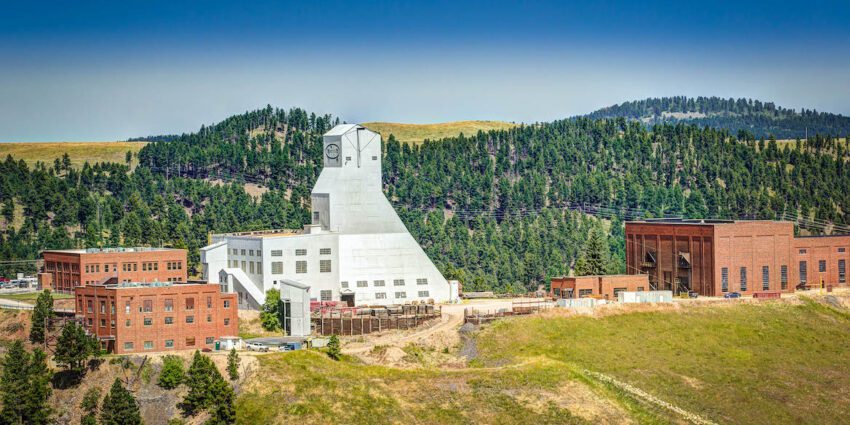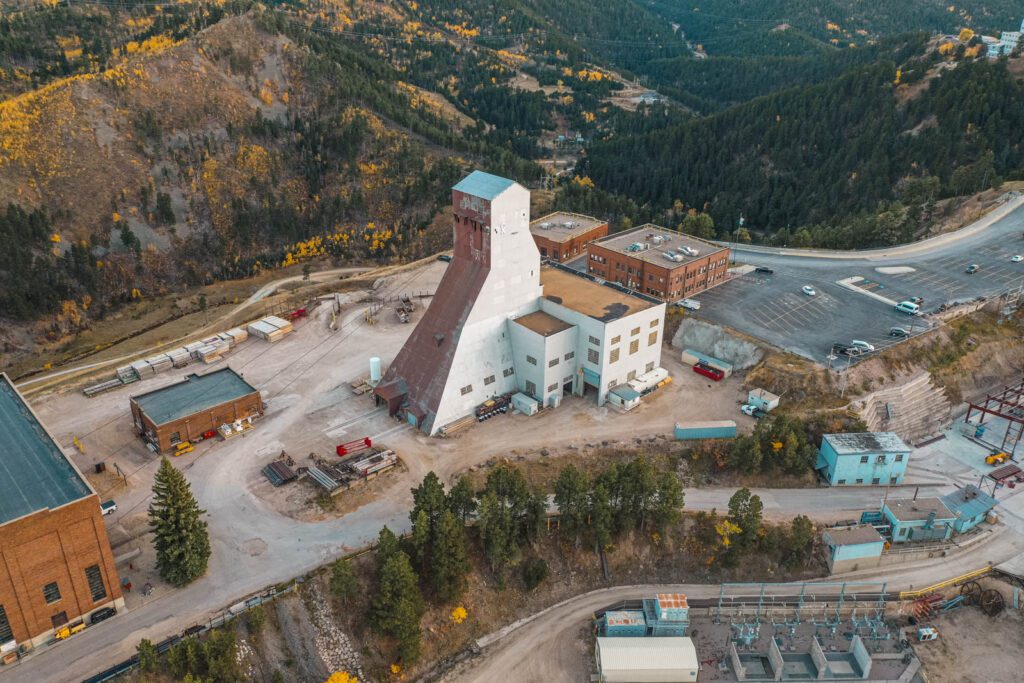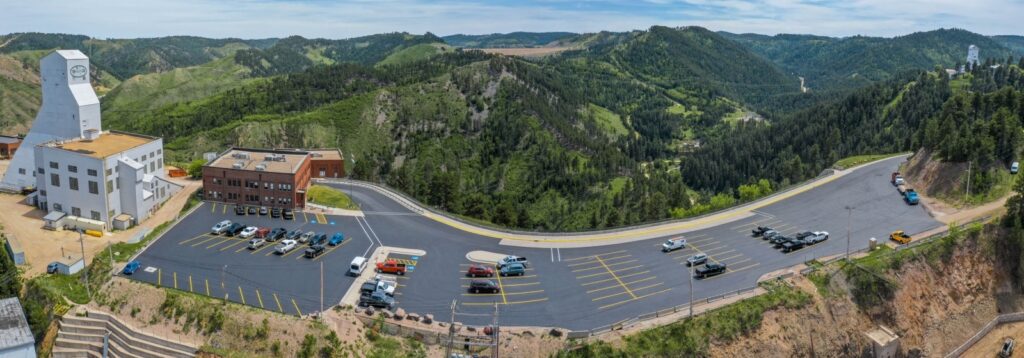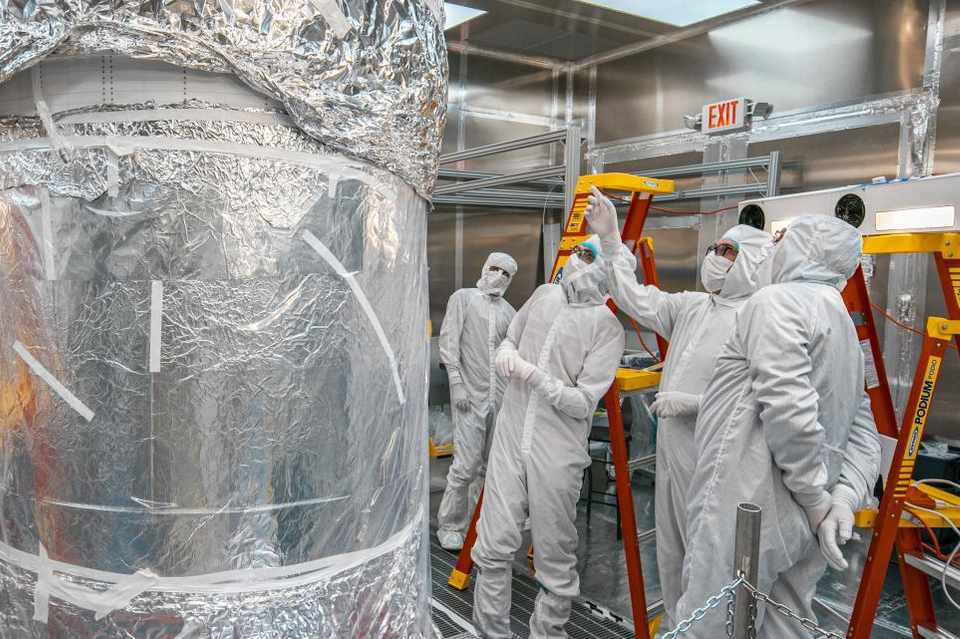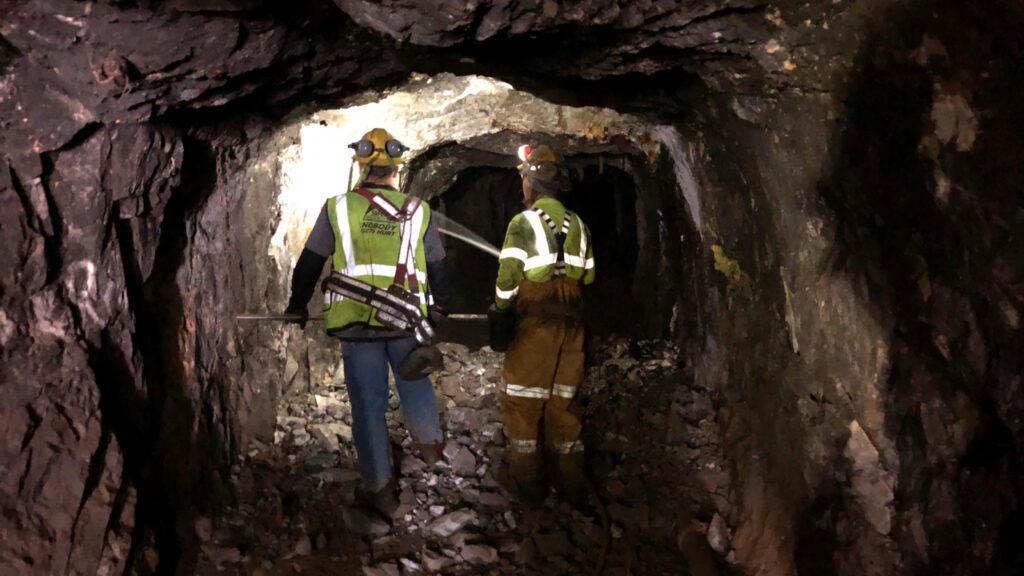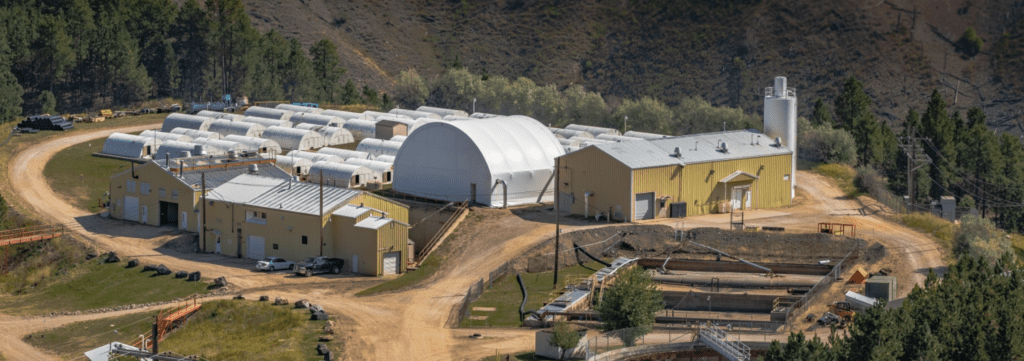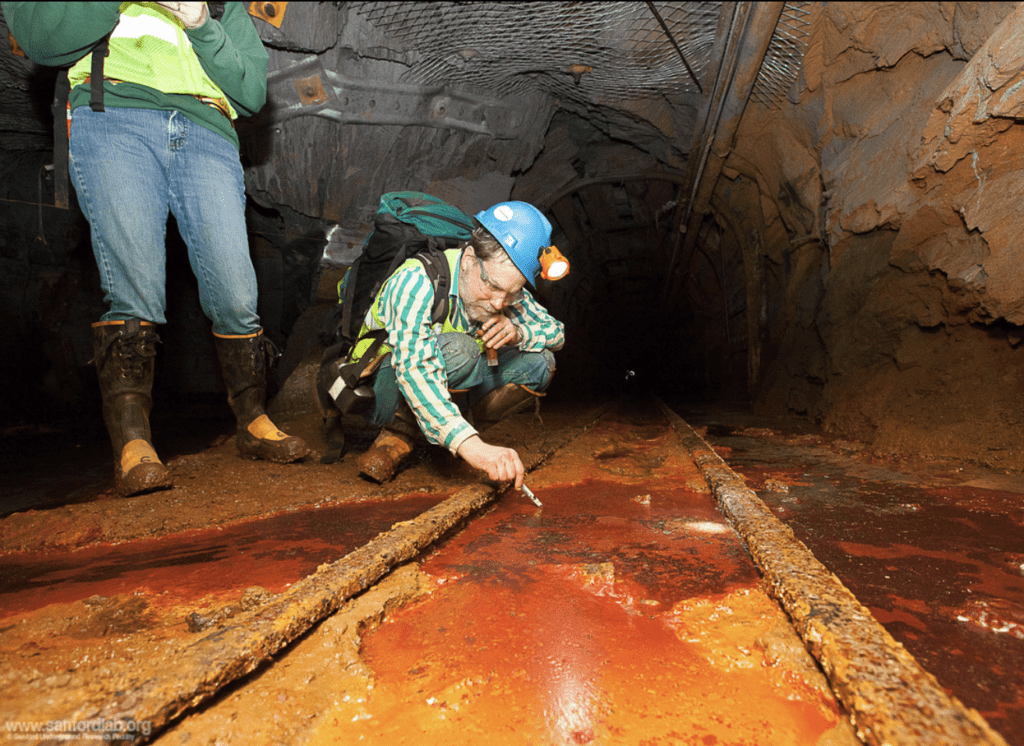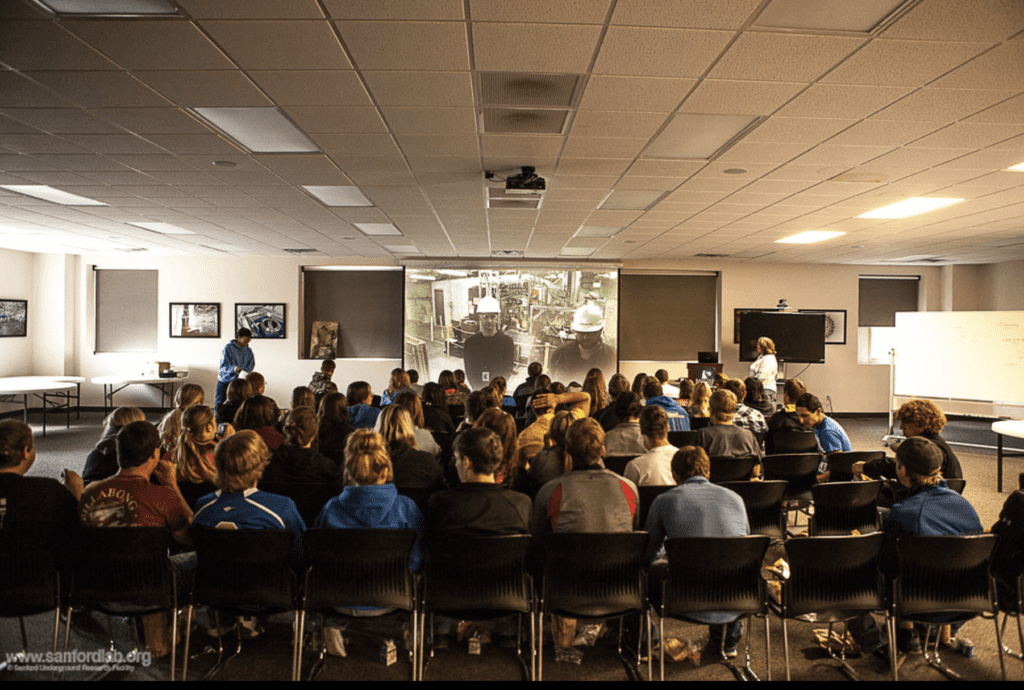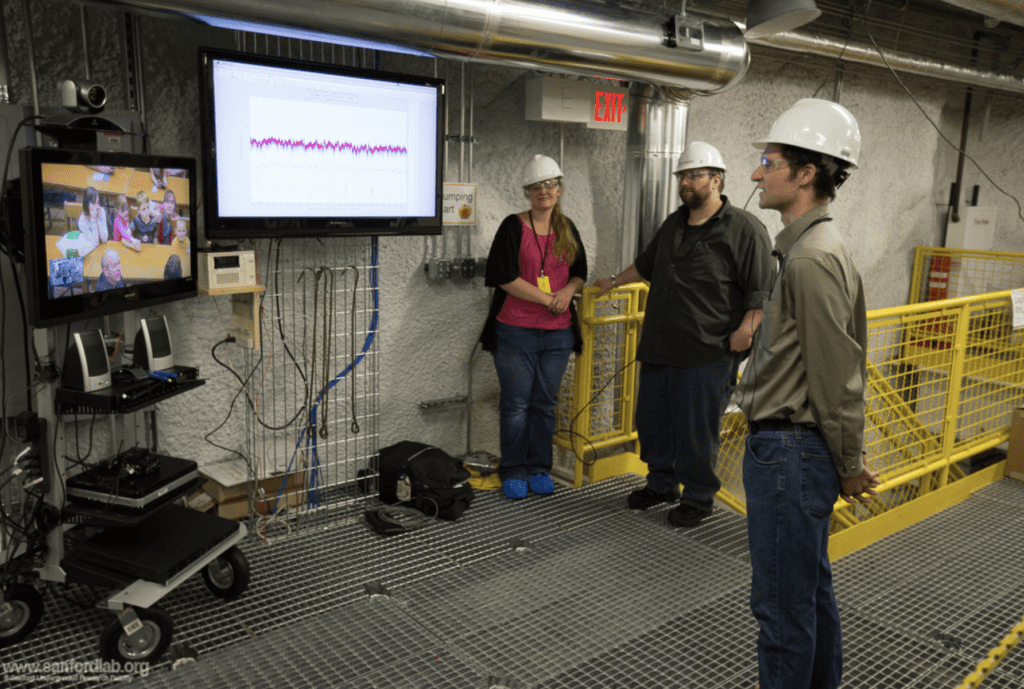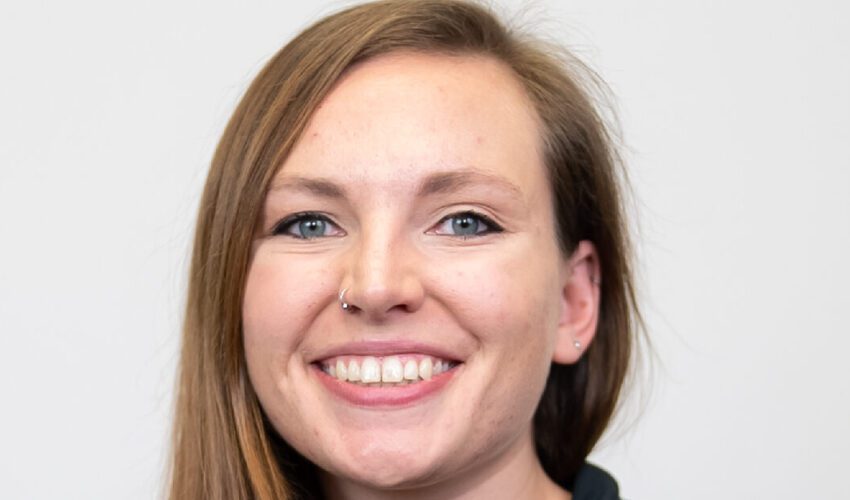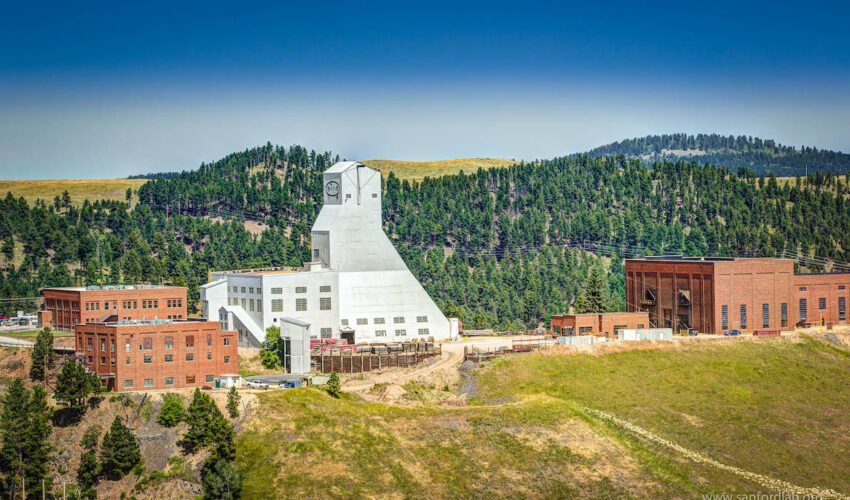At Sanford Underground Research Facility, international-level experiments create big state impact
June 22, 2021
This paid piece is sponsored by South Dakota Biotech.
For more than a century, the Homestake Mine was the deepest and most productive gold mine in the Western Hemisphere.
Today, the site in Lead is the Sanford Underground Research Facility, the nation’s deepest underground research facility – and it’s undertaking its biggest endeavor yet.
“This is America’s underground research facility,” said Mike Headley, executive director of the South Dakota Science and Technology Authority and laboratory director.
“It’s not officially called a national lab, but it looks and acts like a national lab. So it’s significant.”
And it’s working toward one of the largest science experiments ever attempted on U.S. soil – a $1 billion effort to study neutrinos, which scientists believe are key to unlocking vast amounts of new information about the universe.
While many experiments revolve around physics, the lab also hosts researchers working in other fields, including geology, biology and engineering. The common element: an opportunity to research in one of the “quietest” spots on the planet.
“If you tried to operate those experiments on the surface, it would simply be too noisy,” said Headley, who compares it to trying to hear a pin drop at a rock concert.
The “noise” is from cosmic radiation, a lot of it from the sun, that is greatly reduced underground.
For instance, hold out your hand, and there would be three cosmic rays going through it every second. Inside the underground lab, you’d have to hold your hand out for one month before one ray would go through it.
“It lowers the background radiation by a factor of 10 million,” Headley explained. “The vast majority of what we’re doing is basic research. With regard to physics, it’s trying to understand the building blocks of how the universe is put together.”
Solving the mystery of dark matter
Look at a pie chart of what is well known about the universe, and the part that’s well known would be a 4 percent sliver. We live in a matter-dominated universe. Studies suggest there is far more matter in the universe than what we have been able to measure – and that 80 percent of it might be so-called dark matter. And the laws of the “big bang theory” suggest that should not have happened.
So how do we know dark matter exists? Through indirect evidence. Scientists can see its effects on galaxies and clusters of galaxies. Without dark matter, galaxies don’t have enough mass to stay together — they would fly apart.
Researchers and engineers examine the aluminum foil-wrapped xenon detector in the Surface Assembly Lab at Sanford Underground Research Facility. Photo by Nick Hubbard
But researchers with the LUX-ZEPLIN dark matter experiment, located underground at Sanford Lab, are looking to directly detect dark matter, and they believe the leading candidate for a dark matter particle is a WIMP, or weakly interacting massive particle. If WIMPs exist, billions of them pass through your hand, the Earth and everything on it every second. But because WIMPs interact so weakly with ordinary matter, their ghostly journey goes entirely unnoticed.
“No one has been able to detect or measure a particle of it,” Headley said. “There are two dozen experiments around the world trying to be the first to directly detect a particle of dark matter, and whoever is the first to get there will surely win a Nobel Prize, so this work is at that level. Ours will be most sensitive dark matter experiment in the world.”
Deep Underground Neutrino Experiment under construction
A theory being researched underground is that by studying neutrinos, “we can figure out when the big bang happened and why there was more matter than antimatter generated,” Headley said.
That’s where the Deep Underground Neutrino Experiment, or DUNE, aims to make history. An international effort with more than 1,200 researchers, the experiment is enormous in every way.
“We are trying to push the limits and understand the science, while at the same time establishing the U.S. competitively in the world,” Headley said. “The best and brightest are going to go somewhere to do this work, and we want them to stay here.”
DUNE will send the world’s most intense high-energy neutrino beam from U.S. Department of Energy’s Fermilab in Illinois to huge particle detectors 800 miles away at the Sanford Underground Research Facility in Lead.
Photo courtesy Kiewit Alberici Joint Venture
It’s also physically huge. Four neutrino detector modules will be four-stories high and over 200 feet long. Construction crews will excavate almost 800,000 tons of rock to create the gigantic caverns of the Long-Baseline Neutrino Facility that will house the detectors.
Everything required to build the caverns, as well as the future particle detectors, must be lowered a mile below the surface of the Earth through a 13-by 5-foot shaft compartment and then assembled underground, like a ship in a bottle. Even the large machines necessary to remove the rock must follow the process.
In April, after more than three years of pre-excavation work, crews were given the green light to start underground construction. That requires bringing 35 pieces of equipment underground — and around 30 will need to be disassembled to some degree to fit down the shaft. It will take about three months to mobilize all the heavy equipment underground.
This drill rig has been disassembled to prepare it for delivery a mile underground. Before lowering any large piece of equipment, crews perform a test sling to understand how to rig the piece so it hangs properly while traveling through the shaft. Photo by Adam Gomez
The plan is to finish excavation in three years, and then it likely will be another three years of assembly of the detectors before the experiment can turn on.
Lab’s economic impact
For years, the Sanford Underground Research Facility was “simply selling a dream,” said Dana Dykhouse, CEO of First Premier Bank, who has served on the board of directors since 2010.
“We had a hole in the ground full of water, and we were saying one day it would be a lab,” he said. “And we came so close to having a very expensive hole in the ground and nothing to show for it.”
The Homestake Mine closed in 2002, and four years later a $70 million donation from philanthropist Denny Sanford became the catalyst for the creation of a deep underground research facility in the United States. Barrick Gold Corp. made a land donation and the state of South Dakota formed the South Dakota Science and Technology Authority, a quasi-government entity, and committed more than $45 million.
“One of the biggest problems was trying to figure out how to pump water out of the mine. It was bright red with iron, and you can’t dump that into a stream. We were at a crossroads,” Dykhouse said.
“Then, they found out simple sand collects all the iron ore, and if you simply run it through sand, you have clean water out the other end. We’ve learned so many things and had so many good partners.”
For more on the wastewater treatment process, click here.
After an extensive dewatering process, the 4850 level of the lab was dedicated in 2009. It’s an 11-minute ride in a cage, or elevator, to get down there, where it feels like office and laboratory space you’d see above ground – other than without sunlight.
Once experiments began, “people started believing and started coming,” Dykhouse continued. “It’s been quite a journey. South Dakota now has something that will carry long into the future and be a gathering point for scientists around the world to come in and do underground experiments. As South Dakotans, we should be real proud of that. It’s very progressive.”
It also is making a measurable impact on the state’s economy. A 2021 economic impact study determined that from 2020 to 2029, the underground facility’s net economic impact is projected to reach $1.6 billion, creating $572 million in household earnings for South Dakotans and 1,052 jobs annually.
”It’s definitely providing opportunities for people going to school here to get a job when they’re done, and for some of our more senior positions, we’ve had a number of people go off to do technical work in their career and then come back and become part of our team,” Headley said.
The South Dakota Science and Technology Authority, which runs the facility, has 185 full-time staff, and DUNE is estimated to add 160 positions.
Researchers from South Dakota universities do work underground too. One experiment looked at microbes that live in extreme environments and how that could help scientists understand the potential for life to exist on Earth or in the solar system. A prototype for an instrument on the latest Mars rover also was brought underground for testing before it went into space.
And, above ground, the Sanford Underground Research Facility is doing a lot of work in K-12 education, including outreach to schools and engaging more than 50,000 South Dakota students in STEM-related curriculum.
“The Sanford Underground Research Facility has positioned our state as a national and international leader in this field,” said Joni Johnson, executive director of South Dakota Biotech, the state affiliate of the international BIO organization.
“By attracting the level of research that it has, scientists from across the world are being exposed to South Dakota, and those who are based here have access to an incredible resource.”
Within the scientific community, the work done here elevates South Dakota, Dykhouse agreed.
“We become like Los Alamos National Lab in New Mexico or Fermilab in Chicago, and it all creates opportunities for young people and others growing their careers,” he said. “I look at it similar to when Citibank came to South Dakota and the spinoff industries that came from that. We’re going to be at the forefront of scientific research, and people from around the world are coming to this lab. The spinoffs for South Dakota and South Dakota education will be great.”
To learn more about the Sanford Underground Research Facility, click here.

